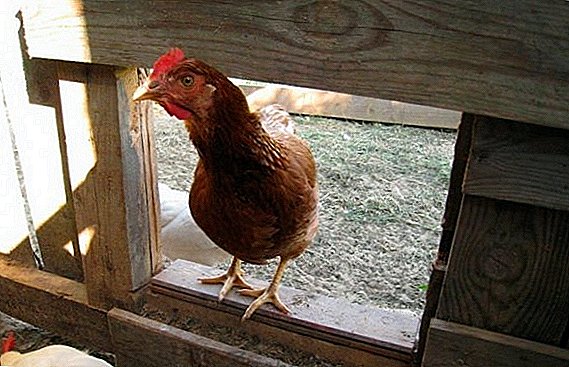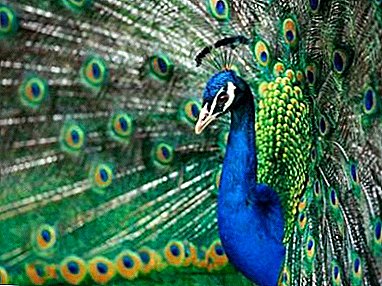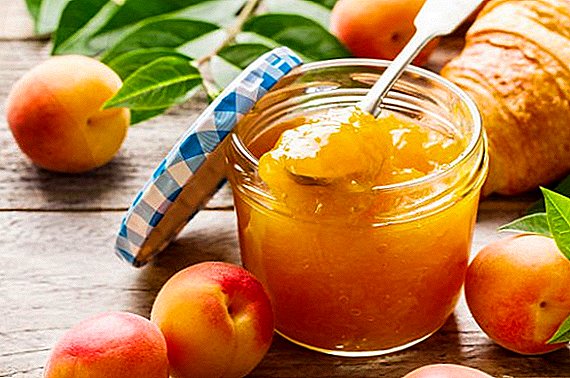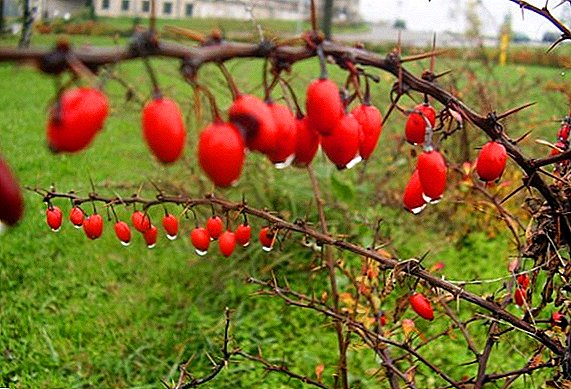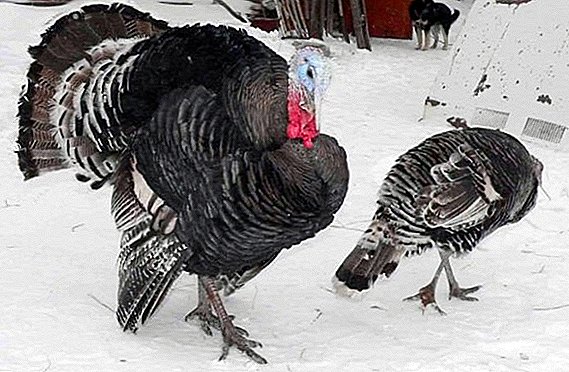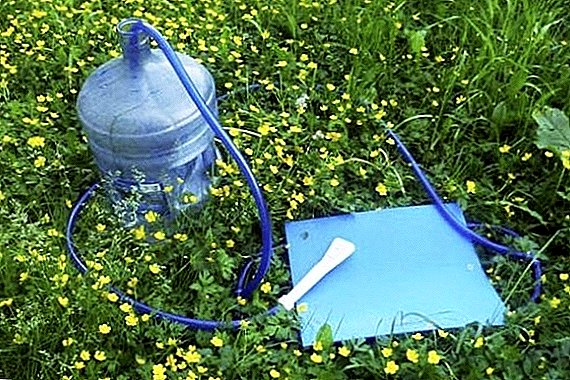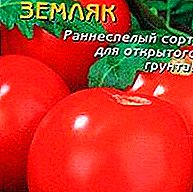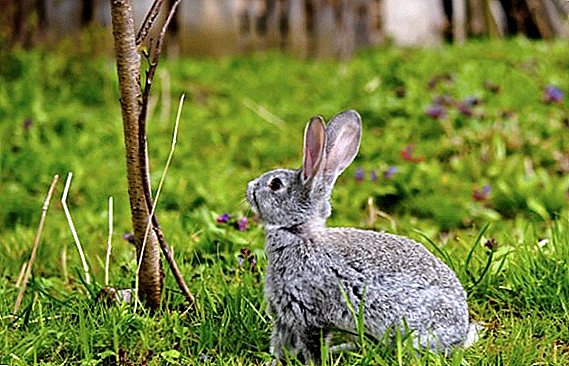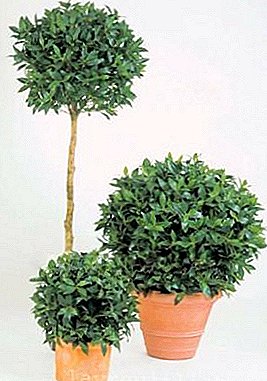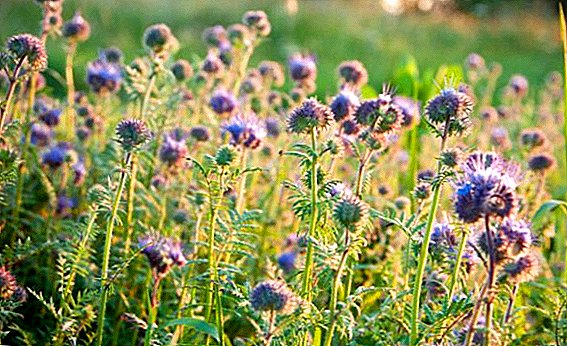 According to statistics, the sphere of gardening and agrotechnology has progressed significantly in recent decades. There are new varieties of plants, more advanced crop processing devices, as well as new methods of processing and fertilizer. This review is devoted to the phenomenon of organic fertilizer, such as phacelia: what kind of siderat, how to apply it correctly, what are the features of growing this forage crop - let's take a closer look.
According to statistics, the sphere of gardening and agrotechnology has progressed significantly in recent decades. There are new varieties of plants, more advanced crop processing devices, as well as new methods of processing and fertilizer. This review is devoted to the phenomenon of organic fertilizer, such as phacelia: what kind of siderat, how to apply it correctly, what are the features of growing this forage crop - let's take a closer look.
What is the value of sideratov
In order to fully appreciate the value and benefits of siderats, one must first consider what this phenomenon is. Green manure are those green crops that are sown before planting the main crop. This is done in order to enrich the soil with various necessary elements.  It is no secret that the grown crop substantially impoverishes the soil, reducing the amount of nutrients in it, and potentially reduces the future harvest. So that the soil does not lose its properties and possesses rich useful elements, and siderats are used - they enrich the top layer of humus well and even improve the composition and structure of the earth.
It is no secret that the grown crop substantially impoverishes the soil, reducing the amount of nutrients in it, and potentially reduces the future harvest. So that the soil does not lose its properties and possesses rich useful elements, and siderats are used - they enrich the top layer of humus well and even improve the composition and structure of the earth.
The value of such plants is:
- low maintenance and cold resistance - they can be sown both in early spring and late autumn;
- high-quality enrichment of soil - the value of siderats sometimes exceeds manure or humus;
- decrease in soil acidity;
- weed protection;
- catalysis of microbiological processes in the soil;
- protection of future crops from pests and some insects;
- treatment and restoration of land after erosion.
Siderats include plants such as oats, lupins, rye, white mustard, fatseliya and others. Due to the unpretentiousness of these crops, their planting time is not tied to a specific month - these plants tolerate low temperatures well. However, not all these siderats are universal in nature: some are intended for sowing just before a specific crop of a certain crop.
Important! Phacelia is a family of water foci - it has no analogues with other plants planted in vegetable gardens. Therefore, it, unlike other sideratov, can be planted before and after any crops.

Phacelia as siderat: advantages and disadvantages
This culture belongs to the buravchikovuyu family. It can be fully called a universal means of enriching the soil - before and after it you can sow any plants and crops. Many gardeners call it an ideal crop - due to the mass positive properties. These include:
- Phytosanitary properties - soil improvement. Due to its uniqueness and dissimilarity to other cultures, phacelia is able to expel various pests - by attracting entomophages that destroy all parasites. The plant can rid the plant of locusts, moths, tsvetoeda and nematodes. In addition, the sanitizing effect is achieved by preventing rot, strong drying of the fruit and the plant itself (therefore, phacelia is often used as fertilizer for potatoes).
- Attracting bees - phacelia is a magnificent honey plant. Large flowers of the plant bloom after 5 weeks after planting and bloom every 2 days. The smell and aroma of flowers attracts a lot of bees, bumblebees - therefore, this plant is also indispensable for beekeepers.
- Soil enrichment. Phacelia is so unpretentious that it can grow even on stony soil, as well as on clay, waterlogged and overdried. Therefore, by planting such a green manure, you can get a crop on the poorest and most unsuitable soils. However, if the ground is very poor - a single landing of the green manure may not be enough. In this case, it will be necessary to sow phacelia throughout the season.
- Weed removal. By eliminating the increased acidity of the soil, phacelia makes it unsuitable for those weeds that suit the acidic environment - for example, wood lice.
- Attractive appearance - this "fertilizer" looks presentable on the beds.
- Quick shoot and ripening culture - The plant will reach full growth (up to 30 cm) within a month. In 4 weeks, the weight of phacelia can reach up to 300 kg per 1 ha - this is equivalent to 300 kg of manure.
- Frost resistance. It also tolerates heat, severe drought, wind, lack of sun.
- Self-seeding ability - provided that the plant will not be cut to the full maturity of its seeds.
 In general, there is no obvious flaws in such a green manure. However, some agronomists refer to negative cultural qualities:
In general, there is no obvious flaws in such a green manure. However, some agronomists refer to negative cultural qualities:- This is an annual plant - to enrich the soil, such green manure will need to be planted every year and sometimes several times a season;
- the need to cut green manure before planting the main crops.
Nevertheless, despite such minor flaws, phacelia still remains one of the most popular and most frequently used siderats in modern agronomy.
Did you know? Phacelia is from America. Its name is translated from Greek as “bundle”.
For which crops it is better to use
The excellent qualities of this plant implies the possibility of its use as a siderata for all crops. For legumes, it is used as an improvement in mending - legumes blossom late, and Phacelia attracts a large number of insects with the bright smell of its flowers.
For potatoes, carrots, beets and other plants whose fruits ripen in the ground, this crop is an indispensable protector against parasites that destroy plant tubers. For all other crops, the properties of green manure make it possible to enrich the soil and increase the yield of plants, as well as to protect them from pests and various diseases.
Agrotechnical features of cultivation
Growing phacelia as a siderata does not require much time or special devices. However, there are some recommendations that will tell you how to sow this culture correctly.
As sideratov also used plants such as lupine, alfalfa, buckwheat.
When to plant
As a rule, phacelia is planted 2 times per year - in early spring and autumn, after harvest. With a strong depletion of the soil, the amount of landing is increased up to 4 times. Spring planting is used to enrich the soil immediately before receiving the current crop, but planting in the fall will prevent drying or excessive freezing of the soil in winter.
In the spring months, this siderat is planted after the first snow has come down, even if the temperature is below 0 ° C. This crop grows and matures very quickly - so it is mown about 2 weeks before the main plants are planted.
To attract bee pollinators, siderat is sown in late spring or early summer. In this case, it is planted between the beds of the main plants.  When to plant siderat in the fall - each gardener decides for himself. Phacelia can be planted immediately after harvesting (in mid-autumn), and after digging a vegetable garden. The main thing - to have time to land the culture before the snow.
When to plant siderat in the fall - each gardener decides for himself. Phacelia can be planted immediately after harvesting (in mid-autumn), and after digging a vegetable garden. The main thing - to have time to land the culture before the snow.
Important! After harvesting potatoes, siderat must be sown immediately - otherwise the earth will become very poor and can be compressed.
How to sow
When planting plants there are some rules:
- Planting rate is not more than 200 g per 1 hectare of vegetable garden.
- The soil should not be too dry, in case of severe drought it is better to water the soil (if planting occurs in summer, then in spring and autumn it is not necessary to water).
- Digging before sowing is not required - however, it is useful to slightly loosen the soil.
- Seeds need to be pressed into the soil a couple of centimeters - with a strong wind, small seeds of a plant can simply be blown off the site.
 Phacelia easily germinates, so its seeds do not require pre-soaking or other processing. You can stock up on phacelia seeds for the future. For this, the crop is planted in a separate area, away from the garden (so that the seeds do not crumble on the beds and do not mix with the seeds of other plants). Then you need to wait for the full maturation of siderata - about 6-7th week after landing. After phacelia ottsvetet, its stalks are cut and dried. Dried siderat is well threshed and seeds are obtained.
Phacelia easily germinates, so its seeds do not require pre-soaking or other processing. You can stock up on phacelia seeds for the future. For this, the crop is planted in a separate area, away from the garden (so that the seeds do not crumble on the beds and do not mix with the seeds of other plants). Then you need to wait for the full maturation of siderata - about 6-7th week after landing. After phacelia ottsvetet, its stalks are cut and dried. Dried siderat is well threshed and seeds are obtained.Did you know? In total, there are about 75 species of phacelia as a culture - however, in practice only 3 types are used: bell-shaped, twisted and pizhmolistny.
How to care
Another value of such a culture is unpretentiousness. The plant does not require special care - it does not need to be specifically watered or protected from the wind. After 3 weeks, the main crops can be planted in the sowing field. Plants such as strawberries, peppers, raspberries, tomatoes, are planted directly between sideratom. In this way, phacelia will protect thin, fragile plant stems from wind, heat, or overdrying. However, before planting potatoes, onions, celery (those plants whose fruits ripen in the soil), the plant must be cut. 
When to mow green
When to clean a siderat will depend on what was the purpose of the landing. If phacelia was planted in order to attract bees, it should be mown and sown anew as it blossoms. When sown at the end of summer - until the beginning of autumn (in order to restore and enrich the soil), phacelia is cut before winter crops are planted. Planting phacelia for the winter period implies its early ascent in the spring - in this case it is cut before directly planting the main crops. Late spring planting of siderata can not be cut off completely, and leave small stems - this will protect the heat-loving crops from drying out.
In order to enrich not only the top layer of the soil, the green mass is dug up at the level of full submersion of shovels - this kind of digging will well enrich and loosen the soil before planting garlic or onion.
The versatility and great value of phacelia as a siderata make it possible not to add any more fertilizer or minerals to the soil - if planted 3-4 times a year, this will be a good guarantee for obtaining a bountiful harvest and excellent soil enrichment.


